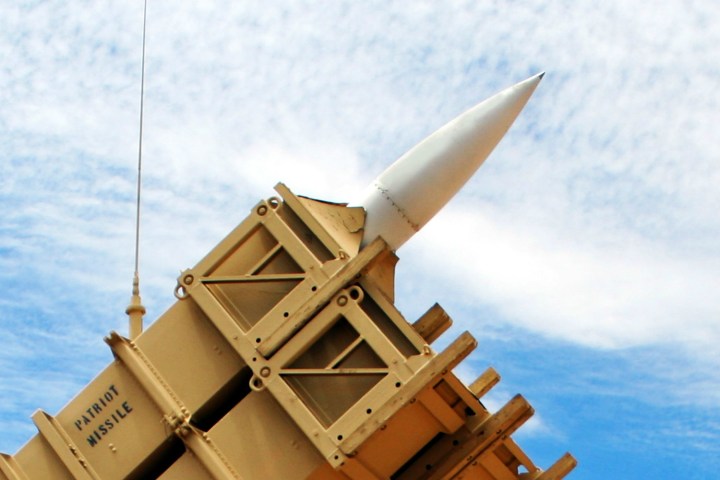
But a “very close ally” of the United States has found a much more dramatic way of taking out remotely controlled copters that it considers a threat — by using a $3 million Patriot missile.
The revelation that a surface-to-air missile traveling at five times the speed of sound had destroyed a consumer quadcopter buzzing along at about 50 mph came this week during a presentation given by General David Perkins of the U.S. Army at a military symposium in Alabama.
“We have a very close ally … that was dealing with an adversary that was using a small quadcopter and they shot it down with a Patriot missile,” Perkins told the audience, adding, “Now, that worked, they got it.”
In case anyone at the event was in any doubt about the effectiveness of using a multimillion-dollar missile on a small contraption made mostly of plastic, Perkins confirmed that the “quadcopter that cost $200 bucks from Amazon.com did not stand a chance against the Patriot.”
Perkins declined to name the nation that deemed it a good idea to use a sledgehammer to crack a nut, but it’s well known that the issue of store-bought quadcopters — machines like DJI’s Phantom 4 Pro — being weaponized is a growing problem in some battle zones, with Islamic State group currently using them in Iraq, for example.
The general did acknowledge that while the Patriot had successfully seen off the drone, using a high-tech missile for such a purpose was actually a monumental waste of money.
“I’m not sure that’s a good economic exchange ratio,” Perkins told the audience, adding, “In fact, if I’m the enemy, I’m thinking, ‘Hey, I’m just gonna get on eBay and buy as many of these $300 quadcopters as I can and expend all the Patriot missiles out there.”
Justin Bronk, a researcher at the Royal United Services Institute, told the BBC that Perkins’ comment “exposes in very stark terms the challenge which militaries face in attempting to deal with the adaptation of cheap and readily available civilian technology with extremely expensive, high-end hardware designed for state-on-state warfare.”
The researcher added that although highly sophisticated, Patriot radar systems might actually struggle to properly target a small quadcopter.
Clearly, the country that fired the Patriot at the drone would do well to take another look at the kind of weapons it uses to deal with such challenges, or simply examine the effectiveness of existing solutions for tackling unmanned, weapon-carrying copters.


